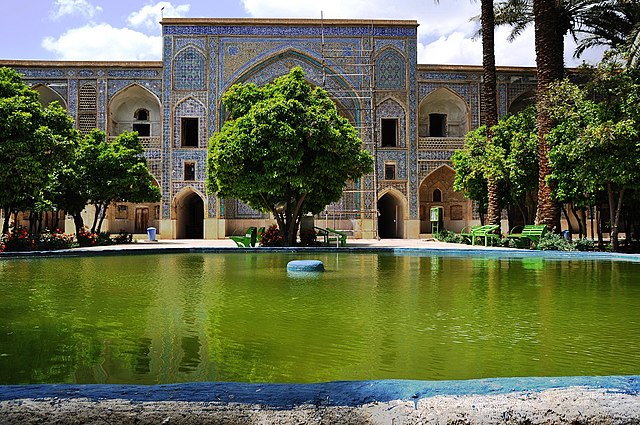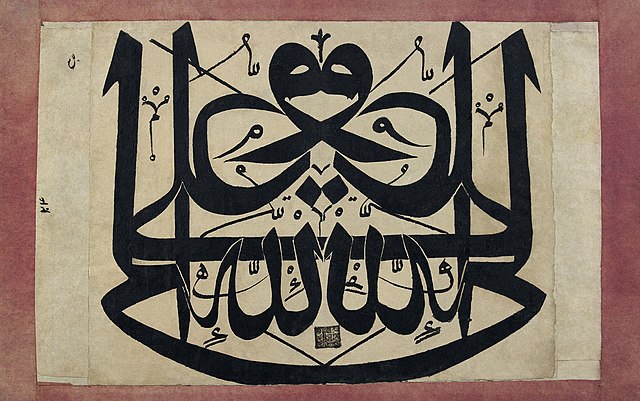Ṣadr ad-Dīn Muḥammad Shīrāzī, more commonly known as Mullā Ṣadrā, was a Persian Twelver Shi'i Islamic mystic, philosopher, theologian, and ‘Ālim who led the Iranian cultural renaissance in the 17th century. According to Oliver Leaman, Mulla Sadra is arguably the single most important and influential philosopher in the Muslim world in the last four hundred years.
Entrance to Mulla Sadra's House in Kahak, Qom
This is a view of the inside of the house of Mulla Sadra in Kahak. A copy of a painted portrait of him is hanged on the wall.
The house of Mulla Sadra in Kahak (a small village near the city of Qom, in Iran) where Mulla Sadra used to live in when he was exiled due to some of his ideas.
Khan School (est. 1595 AD) was a major madrasa that Mulla Sadra was teaching his philosophy during his residence in Shiraz until he died.
Twelver Shīʿism, also known as Imāmiyya, is the largest branch of Shīʿa Islam, comprising about 85 percent of all Shīʿa Muslims. The term Twelver refers to its adherents' belief in twelve divinely ordained leaders, known as the Twelve Imams, and their belief that the last Imam, Imam al-Mahdi, lives in Occultation and will reappear as the promised Mahdi.
18th century mirror writing in Ottoman calligraphy. Depicts the phrase 'Ali is the vicegerent of God' in both directions.
Imam Husayn Shrine in Karbala, Iraq, where the Battle of Karbala took place






